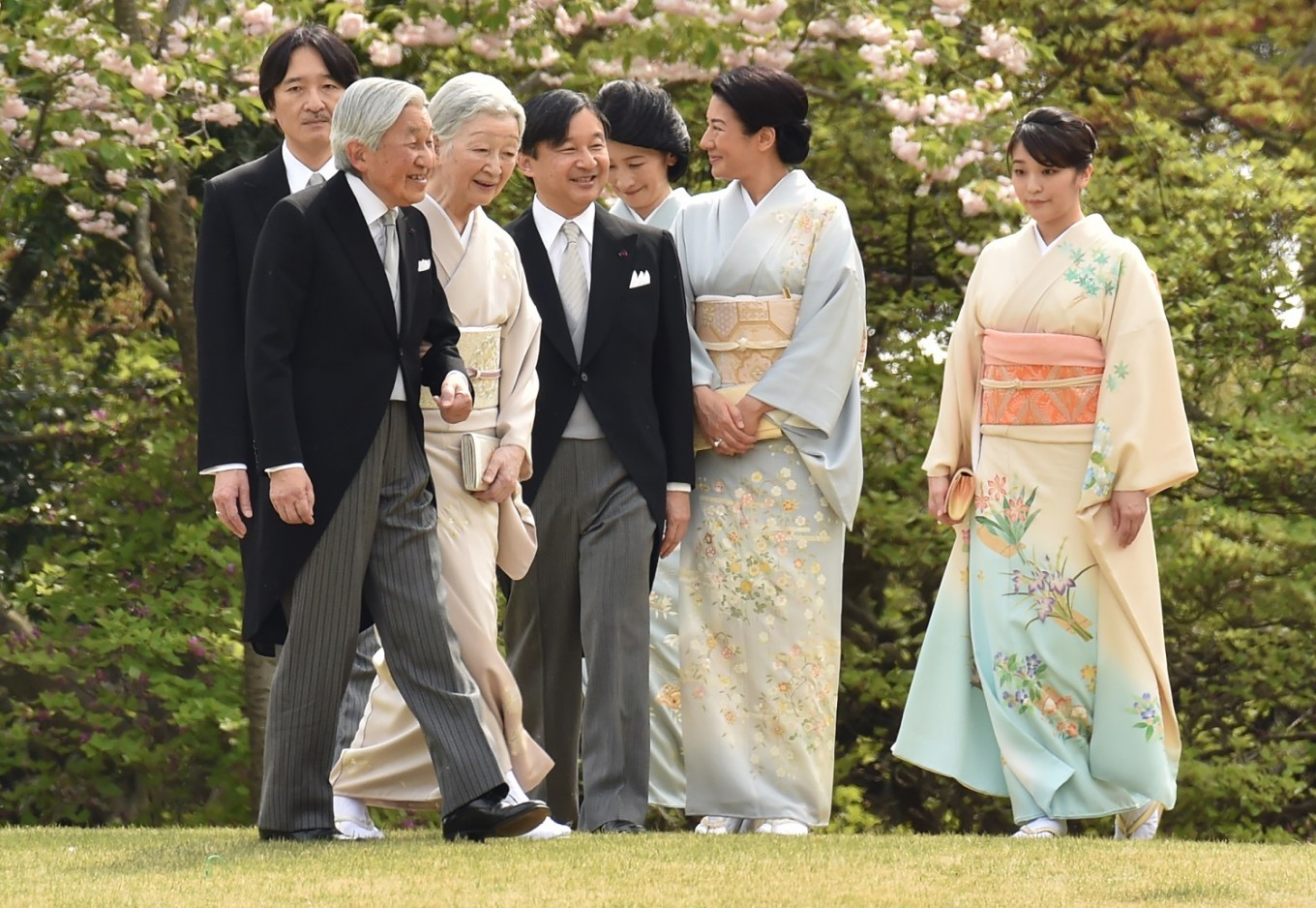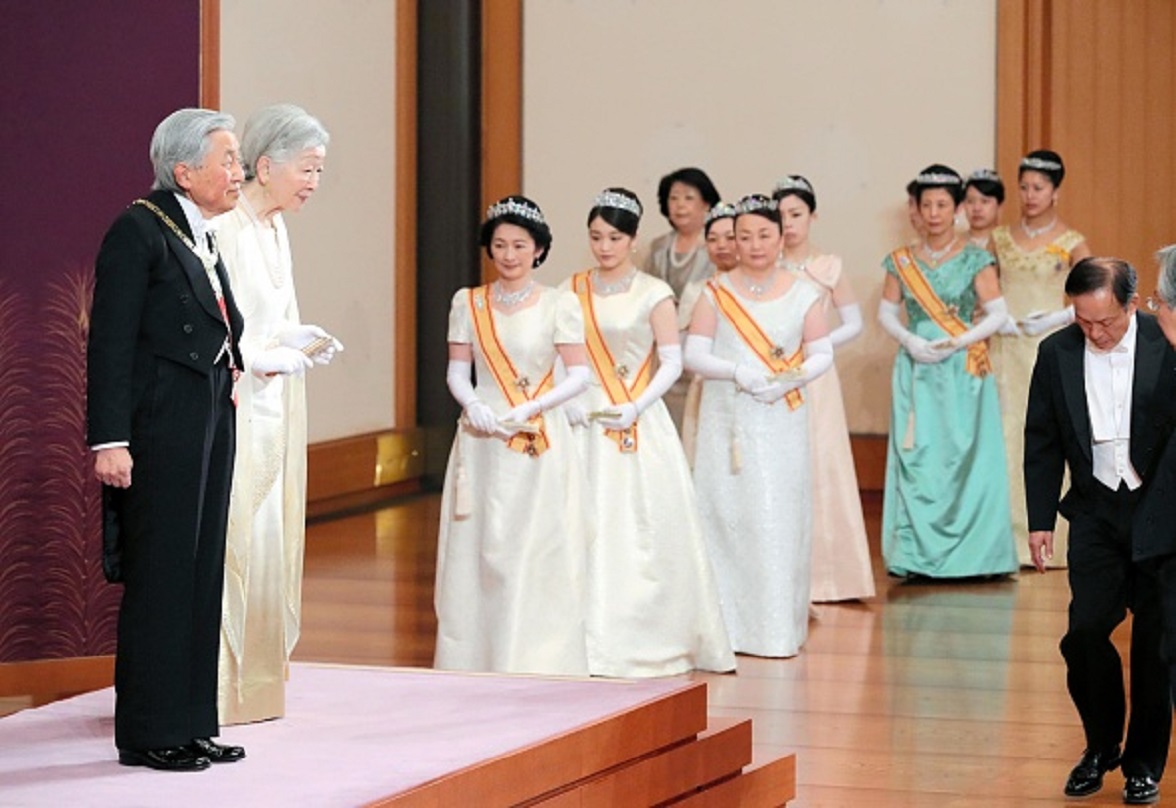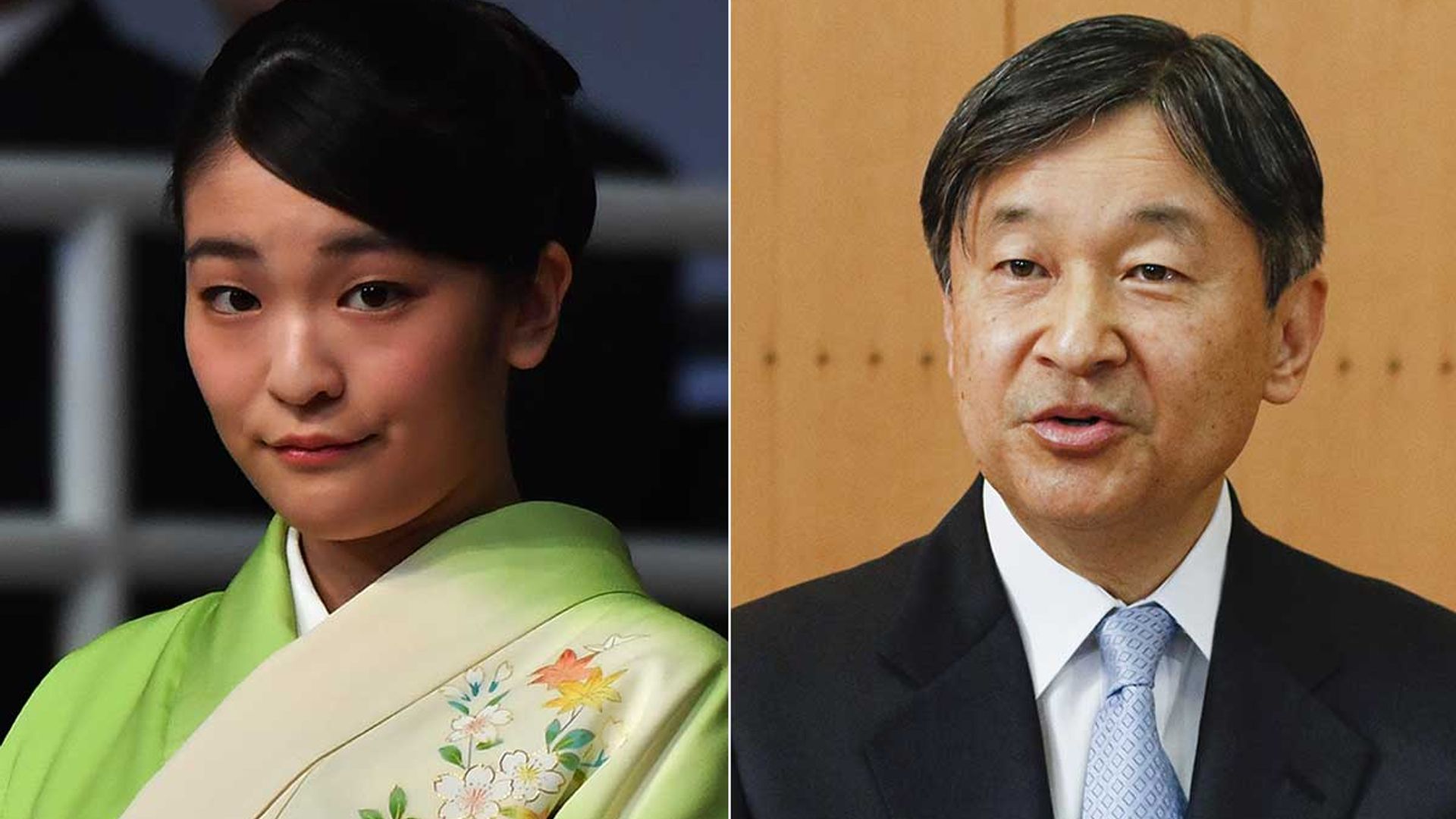Have you ever wondered about the financial standing of royal families around the world? It's a question that often sparks curiosity, especially when we consider the Japanese Imperial Family. Many people are quite interested in the net worth of Japanese royal family, trying to get a sense of their wealth. It's a topic that, you know, can seem a bit mysterious, given their unique position and long history.
Understanding the financial aspects of any monarchy, particularly one as deeply rooted in tradition as Japan's, means looking beyond just simple numbers. It’s not quite like figuring out the wealth of a private business person, so it's a bit different. Their resources, you see, are tied up in various ways, often connected to their public duties and the nation's heritage.
So, we're going to take a look at what makes up the financial life of the Imperial Family. It's a picture that involves historical assets, public funding, and a very distinct way of managing their resources, which, you know, isn't always what folks expect. We'll explore the various elements that contribute to their financial situation, giving you a clearer idea of how things work.
Table of Contents
- Understanding Imperial Finances: More Than Just a Number
- The Imperial Household Agency and Its Role
- Sources of Funding and Public Money
- Imperial Properties and Assets: A National Treasure
- The Emperor and Imperial Family: Personal Expenses
- Historical Context and Evolution of Imperial Finances
- The Public Perception of Imperial Finances
- A Note on Information Gathering
- FAQs About the Japanese Royal Family Finances
Understanding Imperial Finances: More Than Just a Number
When people ask about the net worth of Japanese royal family, they are often looking for a simple, single figure, like you'd find for a wealthy individual or a big company. But, you know, it's actually much more complicated than that. The financial situation of the Japanese Imperial Family is quite distinct from, say, a private fortune or even the wealth of some European monarchies. Their assets are not really private property in the way most people think about wealth; they are largely tied to their public role and the nation itself.
The Imperial Family does not possess vast personal wealth in the traditional sense, at least not in the same way that a business mogul might. Instead, their financial existence is deeply intertwined with the Japanese government and its budget. This means that much of what supports them comes from public funds, rather than private investments or inherited estates that generate personal income. It's a system that, arguably, has evolved to reflect their symbolic, rather than political, role in modern Japan.
So, when we discuss the net worth of Japanese royal family, we are really looking at a blend of public appropriations, historical properties, and a very carefully managed system that keeps them separate from the kind of private financial dealings that characterize individual wealth. It's a rather unique setup, you see, designed to maintain their position as symbols of the state and its people, rather than as wealthy landowners or entrepreneurs.
The Imperial Household Agency and Its Role
A big part of understanding the financial life of the Japanese Imperial Family involves knowing about the Imperial Household Agency (IHA). This government body, you know, plays a very central role in managing everything related to the Imperial Family's daily life and public duties. It's essentially the administrative arm that handles their affairs, including financial matters. The IHA is a government agency, so its budget comes directly from the national treasury.
The agency is responsible for a wide array of tasks, from managing the Imperial Palace and other properties to organizing official ceremonies, maintaining historical records, and, of course, overseeing the finances. This includes the allowances provided to the Imperial Family members, the upkeep of their residences, and the expenses for their official duties. It's a rather comprehensive operation, making sure everything runs smoothly for the Emperor and his family.
So, when you think about the net worth of Japanese royal family, you're really looking at the resources allocated to the IHA, which then supports the family. This structure ensures that their financial support is transparent and accountable to the public, as it's part of the government's overall budget. It's not a private bank account they control, but rather a system of public funding for their specific roles.
Sources of Funding and Public Money
The primary source of financial support for the Japanese Imperial Family comes from the national budget, approved by the Diet (Japan's parliament). This funding is divided into a few main categories, each serving a distinct purpose. It's quite a structured system, really, designed to cover all their needs without them having personal income from other sources.
One key part is the "Imperial Family Living Expenses," which covers the daily living costs for the Emperor, Empress, and other adult members of the Imperial Family who perform official duties. This money, you know, is meant for their personal needs, clothing, food, and other everyday expenses. It's a set allowance, not something that fluctuates wildly based on market conditions.
Then there's the "Imperial Household Agency Budget," which is a much larger sum. This budget covers the vast operational costs of the IHA itself. This includes salaries for the agency's staff, maintenance of the Imperial Palace and other residences, official ceremonies, travel for public engagements, and the preservation of Imperial traditions and artifacts. So, it's a very comprehensive budget that keeps the entire Imperial system running.
Finally, there are "Court Expenses," which are funds allocated for specific public activities and ceremonies. These might include state banquets, welcoming foreign dignitaries, or other events that are part of the Emperor's official duties. All these funds are public money, meaning they are subject to parliamentary oversight and public scrutiny, which, you know, is quite important for transparency.
Imperial Properties and Assets: A National Treasure
When discussing the net worth of Japanese royal family, it's really important to distinguish between private wealth and national assets. The Imperial Family "owns" a number of significant properties, but these are not their private possessions in the way a person owns their home or a business owns its buildings. These properties, including the Imperial Palace in Tokyo, the Kyoto Imperial Palace, and various Imperial villas and farms, are considered national treasures. They are managed by the Imperial Household Agency on behalf of the state, so they are public assets.
The Imperial Palace in Tokyo, for instance, is not something the Emperor could sell or mortgage. It's a historical landmark and the official residence of the Emperor, maintained with public funds. The value of such properties is immense, but it contributes to the nation's heritage and public assets, not to the personal net worth of the Imperial Family members. It's a bit like how the White House belongs to the U.S. government, not the President personally.
Beyond real estate, there are also numerous cultural artifacts, artworks, and historical documents that have been passed down through generations of the Imperial Family. These items are also considered national treasures and are preserved and displayed for the public good, often in museums or at specific events. They are part of Japan's cultural legacy, not private collectibles that could be liquidated for personal gain. So, while these assets are incredibly valuable, they do not factor into a personal net worth calculation for the Imperial Family members.
The Emperor and Imperial Family: Personal Expenses
The Emperor and other members of the Imperial Family receive allowances from the government to cover their personal expenses. These allowances are quite modest compared to the vast sums often associated with royal wealth in other parts of the world. The idea is to provide for their dignified living while keeping them distinct from private financial dealings. It's a very carefully managed system, you see, to maintain their symbolic role.
These personal allowances cover things like clothing, food, and other daily necessities. They don't typically engage in private business ventures or hold significant personal investments. Their focus is almost entirely on their public duties and ceremonial roles. This means they are not accumulating private fortunes through entrepreneurial activities or large stock portfolios. So, when people try to calculate the net worth of Japanese royal family, they often misunderstand this fundamental aspect.
The lifestyle of the Imperial Family, while certainly comfortable and well-supported, is also one of strict protocol and public service. Their expenses are generally accounted for within the framework of the Imperial Household Agency's budget, which is publicly disclosed. This system ensures that their financial existence is transparent and aligned with their constitutional role as symbols of the state, rather than private individuals with vast personal wealth.
Historical Context and Evolution of Imperial Finances
To really grasp the net worth of Japanese royal family today, it helps to look back at history. The financial structure of the Imperial Family has changed quite a lot over the centuries, reflecting shifts in Japan's political landscape. In earlier times, the Imperial Family, you know, held significant land and had direct control over vast estates. They were, in some respects, major landowners with their own sources of income.
However, after the Meiji Restoration in 1868, and especially following World War II, there were major reforms. The post-war constitution redefined the Emperor's role from a sovereign ruler to a symbol of the state and the unity of the people. This transformation had a very profound impact on their financial arrangements. Many Imperial properties were transferred to the state, and the family's financial support became almost entirely dependent on public funds.
This shift was designed to separate the Imperial Family from political and economic power, reinforcing their symbolic position. So, the idea of a private, immense net worth, like that of historical monarchs, really doesn't apply to the modern Japanese Imperial Family. Their financial system today is a direct result of these historical changes, emphasizing public accountability and their role as national symbols rather than private wealth holders. It's a quite deliberate setup, actually, to fit their current constitutional role.
The Public Perception of Imperial Finances
The way the public views the net worth of Japanese royal family is often shaped by a mix of respect, curiosity, and sometimes, a bit of misunderstanding. Because their financial details are managed through a government agency and come from public funds, there's a certain level of transparency. The Imperial Household Agency's budget is published annually, allowing people to see how much money is allocated for their upkeep and activities. This openness is, you know, quite important for public trust.
However, despite this transparency, the concept of "net worth" can still be confusing. People might compare them to other royal families who do have significant private wealth, or to celebrities with large personal fortunes. But as we've discussed, the Japanese Imperial Family's financial situation is very different. Their "wealth" is largely tied to national assets and public funding for their official duties, not personal accumulation. It's a subtle but very important distinction.
Generally, there's a widespread acceptance of the financial support provided to the Imperial Family, given their historical and cultural importance to Japan. Most people understand that their role is symbolic and requires public funding for its proper execution. The public's interest in the net worth of Japanese royal family often stems from a general curiosity about how such an ancient institution functions in the modern world, including its financial aspects. It's a topic that, you know, always seems to get a bit of attention.
A Note on Information Gathering
When you're trying to find out about something like the net worth of Japanese royal family, you often come across all sorts of information. It's like, you know, searching for an April 22, 2025 update for Windows 11, version 22h2 and Windows 11, version 23h2, which includes security and cumulative reliability improvements in .NET Framework 3.5 and 4.8.1. We recommend that you apply this update as part of your regular maintenance routines. Before you install this update, see the prerequisites and restart requirement sections. Summary security improvements there are no new. .NET 8.0 has been refreshed with the latest update as of June 10, 2025. See the release notes for details on updated packages. .NET 8.0 servicing updates are upgrades. The latest servicing update for 8.0 will remove the previous 8.0 update upon successful installation. The March 25, 2025 update for Windows 11, version 22h2 and Windows 11, version 23h2 includes security and cumulative reliability improvements in .NET Framework 3.5 and 4.8.1. The March 27, 2025 update for Windows 11, version 24h2 includes security and cumulative reliability improvements in .NET Framework 3.5 and 4.8.1. Summary security improvements there are no new security improvements in this. It allows the container greater network access than it can normally get. Normally you have to forward ports from the host machine into a container, but when the containers share the host's network, any network activity happens. Summary this article describes the security and cumulative update for 3.5, 4.7.2 and 4.8 for Windows 10, version 1809 and Windows Server 2019. Quality and reliability improvements for a list of improvements. I'm kind of new to the .NET area. There is big confusion about all these which I really couldn't figure out. I searched a lot, but I couldn't find any simple and straightforward explanation for .NET (.NET Framework 4.5+, .NET Standard 1.1+, and .NET Core 1.0+). It is currently the preferred approach, and is asynchronous and high performance. Setup it is recommended to instantiate one. How do I find out which version of .NET is installed.
That block of text, you know, is a perfect example of how much information is out there. It's about software updates and network settings, which is clearly not about royal finances. But it just shows that when you're looking for answers, you might stumble upon things that are completely unrelated to your main topic. It's a reminder to always check your sources and make sure the information you find actually helps answer your specific question about something like the net worth of Japanese royal family.
FAQs About the Japanese Royal Family Finances
How is the Japanese Imperial Family funded?
The Japanese Imperial Family is primarily funded through annual appropriations from the national budget, which is approved by the Diet (Japan's parliament). These funds are managed by the Imperial Household Agency and cover their living expenses, official duties, and the maintenance of Imperial properties. It's a very public system, you know, not like a private income.
Do members of the Japanese Imperial Family have personal wealth?
While they receive allowances for personal expenses, members of the Japanese Imperial Family do not typically possess significant private wealth or engage in private business ventures. Their financial existence is very much tied to their public role and the government's budget, so they don't accumulate large personal fortunes in the way some private individuals do. It's a rather distinct arrangement, you see.
Are the Imperial Palace and other properties owned privately by the Emperor?
No, the Imperial Palace and other Imperial properties are considered national assets of Japan, not private possessions of the Emperor or the Imperial Family. They are managed and maintained by the Imperial Household Agency using public funds. These properties are part of Japan's cultural heritage, so they're not for sale or private use in that way.
To get a deeper understanding of historical royal finances



Detail Author:
- Name : Mr. Hoyt Marks IV
- Username : hellen09
- Email : dianna.cruickshank@wehner.com
- Birthdate : 1997-04-12
- Address : 4447 Schuyler Valley Apt. 935 South Leonardoberg, SD 43137
- Phone : +1-985-520-3592
- Company : Terry-Ankunding
- Job : Control Valve Installer
- Bio : Quis aut architecto optio ea. Dolores nam rerum sunt magnam in in incidunt. Amet ipsum tenetur recusandae possimus nihil.
Socials
linkedin:
- url : https://linkedin.com/in/jamey418
- username : jamey418
- bio : In quia error exercitationem sint et quidem et.
- followers : 4218
- following : 859
facebook:
- url : https://facebook.com/jamey_dev
- username : jamey_dev
- bio : Sint voluptatem delectus molestias error placeat vitae.
- followers : 4979
- following : 1634
twitter:
- url : https://twitter.com/jamey_sporer
- username : jamey_sporer
- bio : Minus qui voluptatem praesentium ut omnis harum natus soluta. Quis iste autem animi et et. Voluptatem ratione et harum voluptate debitis asperiores illo.
- followers : 451
- following : 2348
tiktok:
- url : https://tiktok.com/@sporer1999
- username : sporer1999
- bio : Consequatur dolore debitis consectetur facere quia.
- followers : 6494
- following : 2174